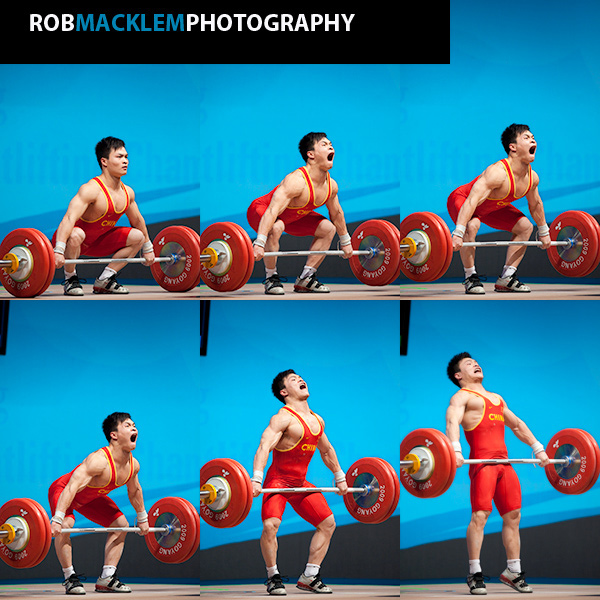
A deadlift is not just a deadlift, there are MANY ways to pull depending on the athletes strength, body, flexibility, and most of all translation to sport. A VERY over-looked emphasis when developing an athlete in the weight room.
Here at Fusion Weightlifting, we focus on movements that will translate to our sport skill, which is comprised of:
Snatch:

Clean and Jerk:

Snatch Deadlift:
Today we’ll talk about the Snatch Dead-lift. Take a look at how Team Fusion performs the Snatch Deadlift for a stronger pull:
You’ll notice that James stops at the double knee bend, instead of standing fully erect. This pull style places the lifter so that they can now load the legs and go into a straight extension- you’ll see James complete his set with a double extension.
Our goal is to have a high translation to the sport movement (Snatch, Clean & Jerk) as much as possible. This is why we pull and strengthen our lifters in a similar joint angle to the classical lifts. The above way of pulling also helps us stop over extension of the 2nd pull and helps load the legs, instead of the back.
This is how Joe Yu (former National Chinese lifter) had showed me to pull and snatch. With the correct positioning, you’ll feel it in your quads and VMO!

How Team Fusion Implements the Snatch DL:
Depending on the phase and athlete we’ll do any where from 3-8 sets of 1-5 reps. If the athlete has a major pulling problem and he/she is in Phase 1, they may need 10’s. So it just really depends on the weakness/strengths the lifter has, time we can spend the lift, and adaptation rate.
Two Rules Fusion Follow with Pulls:
- Speed of the bar, we like to make sure the athlete still generates speed in the second pull and has relatively smooth but fast first pull.
- Body position
- The tendency for most lifters when they go too heavy (120%+) is the change in mechanics of the pull, the focus switched to just lifting the bar up, instead of maintaining positioning. While this increases general strength capabilities, we’ve found these type of pulls have minimal translation when you start to go maximally in the classical lifts.
That’s it for today, short and sweet. Make sure to post any thoughts or questions below, and share this with others! Next time we’ll talk about squat positioning and transfer to the classical lifts.
And if you’re looking for Weightlifting in NYC, give us a shout!
Email us at: Info@fusionweightlifting.com or press the mail button under “Follow Fusion Weightlifting”
